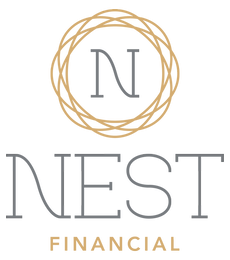Social media and finance are becoming enmeshed in new ways, and phenomenons that used to be considered niche economic topics are now the subject of long comment threads, running online jokes, and even impetus for change.
At this point we’ve all heard of ‘meme stocks’ such as AMC and GameStop, come across the r/wallstreetbets catchphrases (to the moon!), or seen the cryptic and influential tweets that Elon Musk fired off about Dogecoin. Whether your timeline is buzzing about Wall Street or cryptocurrency, there are many content creators online who are eager to discuss these cutting-edge financial developments with retail investors, and their audience is growing everyday.
One of these new developments that has recently entered the layman’s radar are Non-Fungible Tokens, or NFTs. NFTs have been around for a while but have only recently entered the super-mainstream, making the headlines as a potential source for a big pay out, and we mean a huge payout, being sold and bought for millions of dollars.
OK, I’ll bite… what is an NFT?
An NFT is a unique digital asset. Bitcoin is fungible – meaning that one bitcoin can be exchanged for the other. But non-fungible tokens are unique to the blockchain, like a limited edition item or something that is valuable because it is rare. For example, a dollar is fungible because it is exchangeable for any other dollar, while a piece of art or a signed Nirvana poster is unique and not interchangeable with anything else. Thus an NFT is essentially a “limited edition” of a digital asset, like the first Tweet or the original copy of a meme. Some people purchase them as a collector’s item, while other people see it as an investment – just like an original Picasso painting is worth a lot of money today, some NFTs could be worth a lot more money in the future.
There are already some murky legal issues surrounding the NFT marketplace, since what the buyer is paying for is a new product and thus not yet easily defined in legal terms. A big part of this issue is that an NFT’s value is speculative – how much it’s worth is determined only by how much someone is willing to pay for it.
Taking something like a .gif and turning it into something that can be sold and owned requires making it unique and proving ownership. If this made you think of the blockchain technology used for cryptocurrencies, you’re a smart cookie – NFTs use the blockchain to establish ownership and scarcity, or that there is a limited number of tokens associated with a piece of digital content.
What is cryptography?
Cryptography is a technique used to protect the privacy of information and send secure messages between participants. The sender is able to encrypt a message using a type of key and an algorithm, and the receiver then uses a key to decrypt the message and revert it to its original form. Anyone without the key to decrypt or encrypt will simply see random, unintelligble characters.
Items on the blockchain are thus secure and there is a leger, an uneditable history, of transactions as well. This is also true for Bitcoin and other cryptocurrencies. NFTs use the blockchain to mint and keep track of tokens being created and exchanged which preserves the uniqueness of what would otherwise be easily reproducible (because it’s a digital asset). Most NFTs created by individuals are being minted on the Ethereum blockchain, and there are laymen guides available that explain how to create and sell your own NFTs, which also may help you to understand the process better.
Emergence and upside of NFTs
While NFTs can be traced back to 2012, they entered the mainstream in 2017 with a game called Cryptokitties, where players can buy and “breed” virtual cats. Game developers adopted NFTs from there so that players could win in-game items, prizes, and collectibles. This enabled transferring tokens between games or players on the blockchain marketplace. Outside of gaming, NFTs are used to sell virtual collectibles, like NBA trading cards, music, digital images, art, and even virtual real estate. Meme NFTs have sold for millions.
NonFungible.com, a website that tracks NFT projects and marketplaces, values the total NFT market at $250 million. This is a fraction of the entire crypto market, but as a content creator it’s hard to ignore that number, and it’s clear that NFTs have made an impact in the art world. For artists, NFTs offer a new layer of security to their digital products, as signatures can not be copied from the code even after an NFT is purchased. It also allows artists to cut out an intermediary and sell directly to their consumers. There’s potential to earn a significant amount of money even if an artist doesn’t sell an NFT for millions, because a contract behind these non-fungible tokens according to ERC-721 standards enables creators to earn a percentage from all subsequent sales.
New mediums for content have emerged at various points throughout history, and the NFT market is likely to reach beyond the art world because it presents a highly efficient way of managing and securing digital assets, and any piece of digital information can be ‘minted’ into an NFT. This could mean using NFTs and blockchain technology to assign patents, certificates, provide proof of ownership for a physical item or an experience (like a concert ticket), and other digital items.
Non-fungible or non-viable?
As we know from Bitcoin crackdowns in China, blockchain technology is not the most eco-friendly process. Each NFT transaction on the Ethereum network consumes the daily energy equivalent of 2 American households, for example. “Mining” is done on special computers that are competing to solve complex math puzzles, and the enormous amount of computer power required to ‘mine’ causes this electricity consumption.
Ethereum is working towards a more environmentally-friendly design, and there are new blockchain technologies that are emerging that have a smaller carbon footprint. But until these efforts are fully realized, the negative environmental impact will keep some people from engaging with NFTs and their market.
An emerging crypto-economy?
We mentioned it in a previous post about cryptocurrencies, but whether you love or hate Bitcoin or think that NFTs sound like “digital beanie babies”, it seems like Blockchain technology is here to stay – and what’s more, that we’re only scratching the surface of its potential applications.
Like the driving force behind recent meme stock narratives, NFTs, cryptocurrencies, and blockchain technology represent exciting advances in the world of finance, and many retail investors are eager to take advantage of digital economic innovation. Check out our educational resources, including the NEST Edge webinar, for general information about market updates, and reach out to us directly at info@nestfinancial.net for specific guidance regarding how to engage responsibly with these kinds of trending economic opportunities.
Find us on:
LinkedIn Facebook Yelp Twitter
DISCLAIMER: We are legally obligated to remind you that the information and opinions shared in this article are for educational purposes only and are not financial planning or investment advice. For guidance about your unique goals, drop us a line at info@nestfinancial.net.






[…] of cryptocurrency and other blockchain applications is the NFT, or the non-fungible token. We have discussed these digital puzzlers on the blog before, but it’s important to note that these are not cryptocurrencies, which are by their very […]